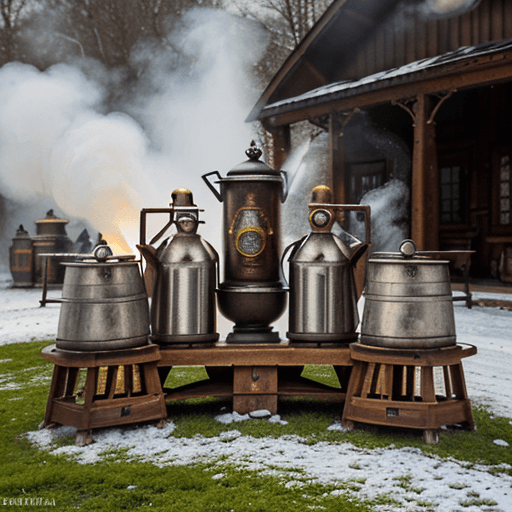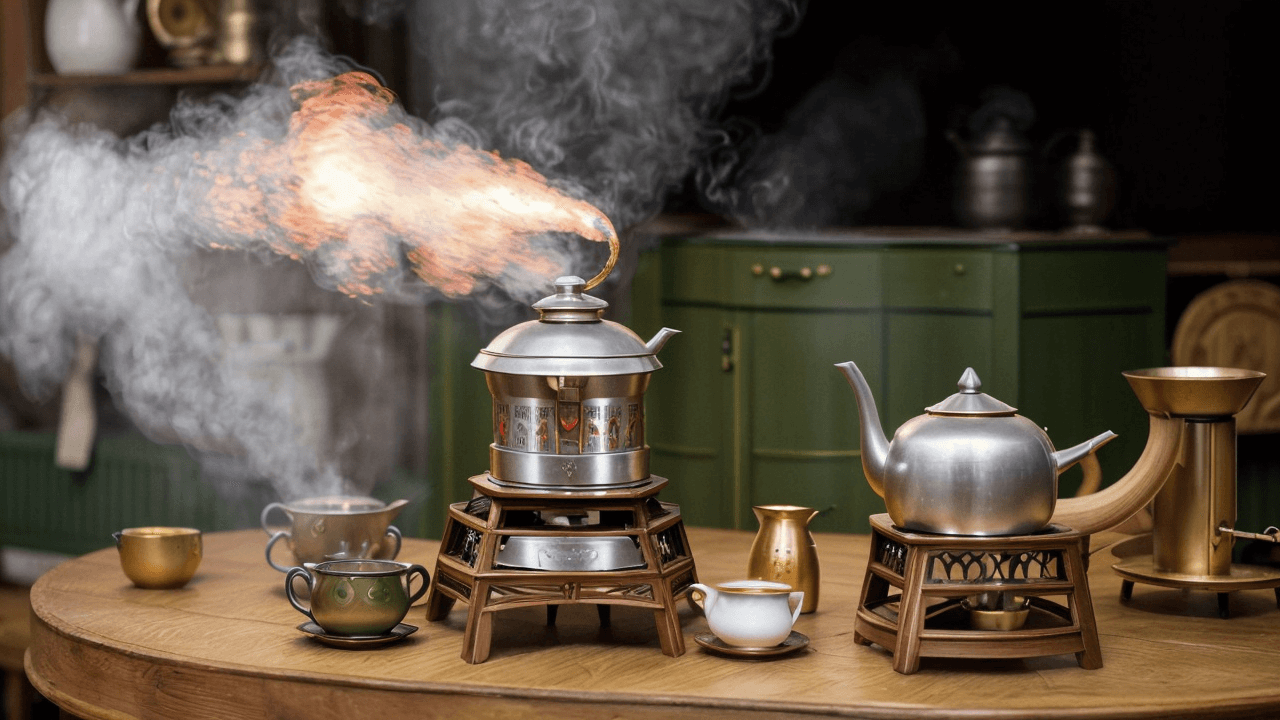In Russia, the art of heating a samovar with wood and coal has been a cherished tradition for centuries. This majestic contraption has been the centerpiece of countless family gatherings, social events, and cozy afternoons for generations. In this article, we’ll delve into the world of wood-fired samovars, exploring their history, operation, and cultural significance.
A brief history of samovars
The word “samovar” comes from the Russian words ” sama” (alone) and “varit” (to boil). This refers to the fact that a samovar is typically designed for individual use, allowing one person to heat it without assistance. The first samovars were made in China during the Ming dynasty (1368-1644 CE), but it was the Russians who popularized this brewing vessel and transformed it into an integral part of their culture.
Watch the video of how the samovar is lit and burns
Over time, Russian samovars evolved to become larger and more complex, often featuring intricate designs, enameled finishes, and ornate decorations. The most iconic and sought-after samovars were those made from copper, adorned with lavish patterns and often bearing the mark of a renowned artisan.
The wood-fired samovar: a narvel of engineering
A wood-fired samovar is an extraordinary example of Russian ingenuity and craftsmanship. This magnificent brewing vessel consists of several key components:
1. Body: The main body of the samovar, usually made from copper or other metals.
2. Firebox: Located at the bottom of the samovar, this is where wood chips or small logs are burned to heat the water.
3. Coal Chamber: A separate compartment for burning coal to provide a sustained heat source.
Lighting a wood-fired samovar
Operating a wood-fired samovar requires patience, finesse, and attention to detail. Here’s a step-by-step guide on how to light one:
1. Prepare the Firebox: Place small logs or wood chips in the firebox, leaving enough space for air to circulate.
2. Add Kindling: Add dry kindling (e.g., newspaper, twigs) to the firebox to help get the flames started.
3. Light the Fire: Use a match or lighter to ignite the kindling, allowing it to burn until it reaches a steady flame.
4. Add Coal: Once the fire is burning steadily, add coal to the coal chamber. This will provide a sustained heat source.
5. Monitor and Adjust: Regularly monitor the temperature of the samovar and adjust the airflow as needed to maintain a consistent heat output.
Using coal with a wood-fired samovar
While wood is the primary fuel source for a wood-fired samovar, coal can be added to provide a more sustained heat source. Here’s how to incorporate coal into your heating process:
– Use high-quality coal: Choose anthracite or bituminous coal, which burns efficiently and produces minimal smoke.
– Add coal when the fire is burning steadily: Once the wood fire is burning steadily, add coal to the coal chamber.
– Monitor temperature and adjust airflow: Regularly check the temperature of the samovar and adjust the airflow as needed to maintain a consistent heat output.
Tips and tricks
To get the most out of your wood-fired samovar:
– Use high-quality, dry firewood to maintain a consistent heat output.
– Keep the firebox clean by regularly removing ash and debris.
– Experiment with different coal types and ratios to find the perfect balance for your needs.
– Practice makes perfect! Operating a wood-fired samovar requires patience and finesse.
The cultural significance of samovars
In Russian culture, the samovar is more than just a brewing vessel – it’s an icon of hospitality, tradition, and community. Gathering around a steaming hot samovar was (and remains) a staple of social life in Russia. The samovar represents warmth, comfort, and connection among friends and family.
In fact, the Russian phrase “go with the tea” is more than just a polite expression – it’s an invitation to join others around the table, share stories, and make memories together. In this sense, the wood-fired samovar has become an integral part of Russia’s cultural heritage, transcending generations and borders.
The operation of a Russian wood-fired samovar is an art form that requires attention, patience, and care. As we’ve explored in this article, these magnificent brewing vessels are not only functional but also steeped in history, culture, and tradition. Whether you’re a seasoned enthusiast or just discovering the world of wood-fired samovars, we hope this guide has inspired you to experience the magic of Russian hospitality.
Remember, as the saying goes: “A good samovar is like a warm hug for your soul







